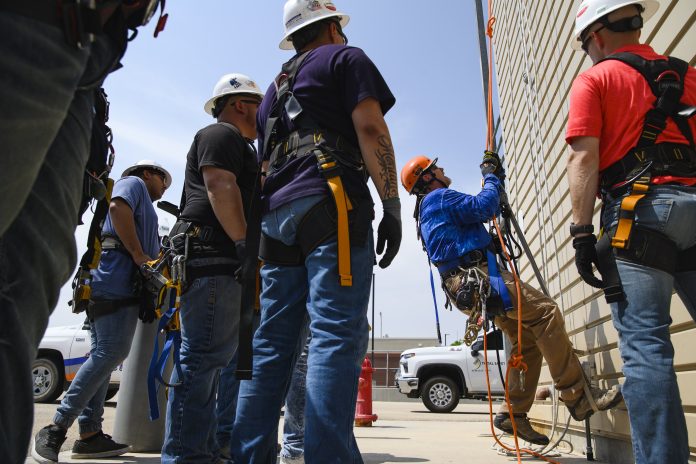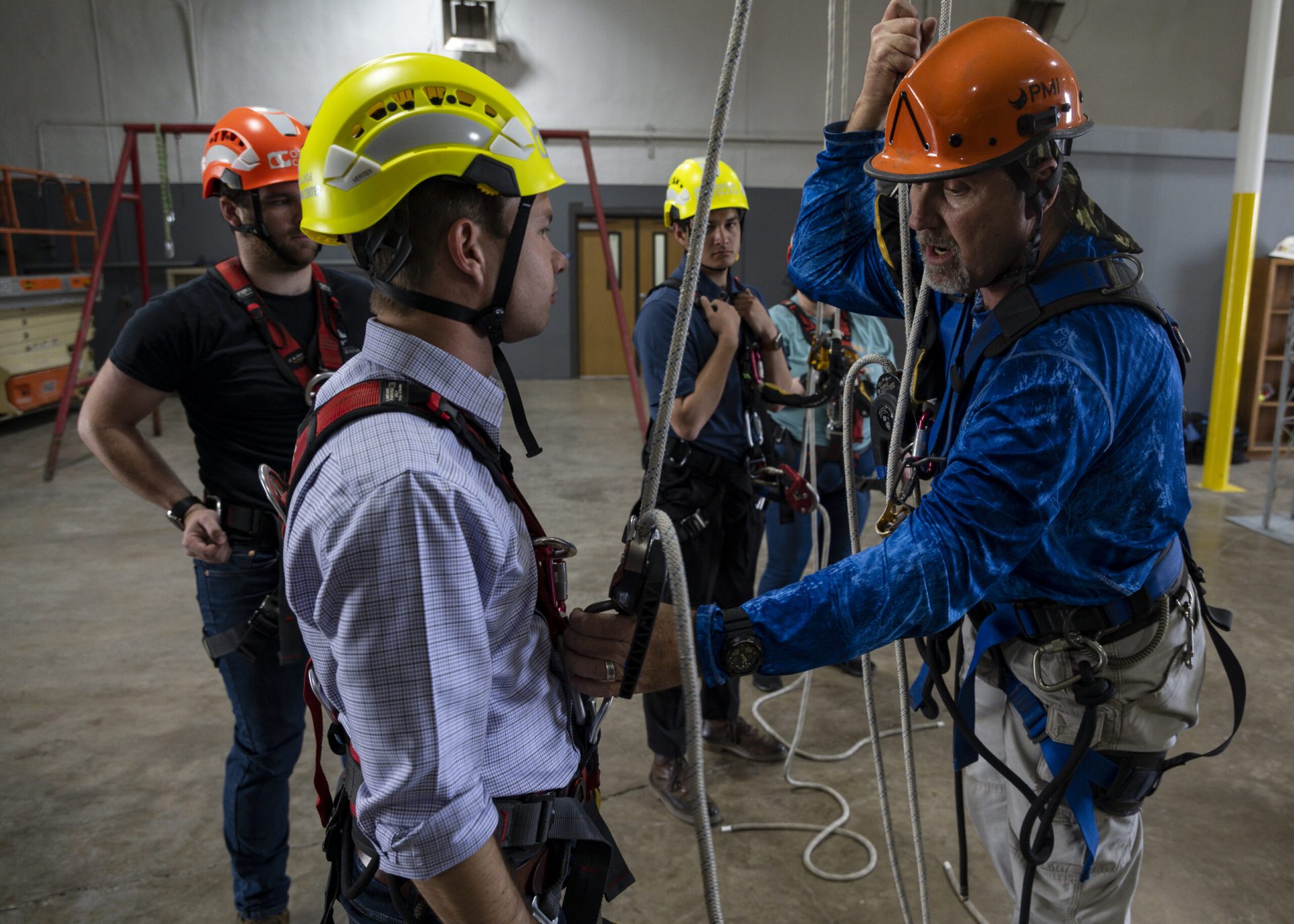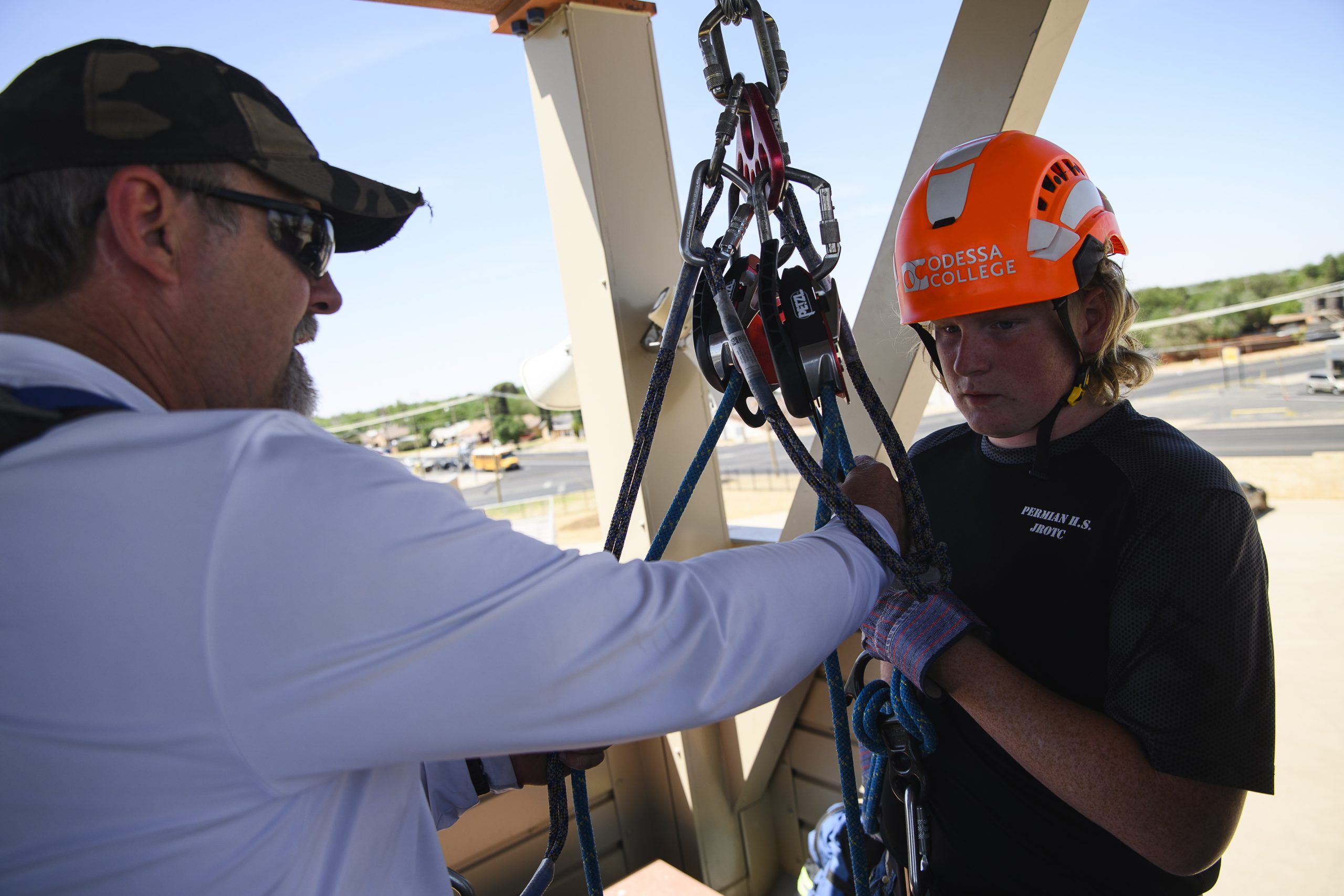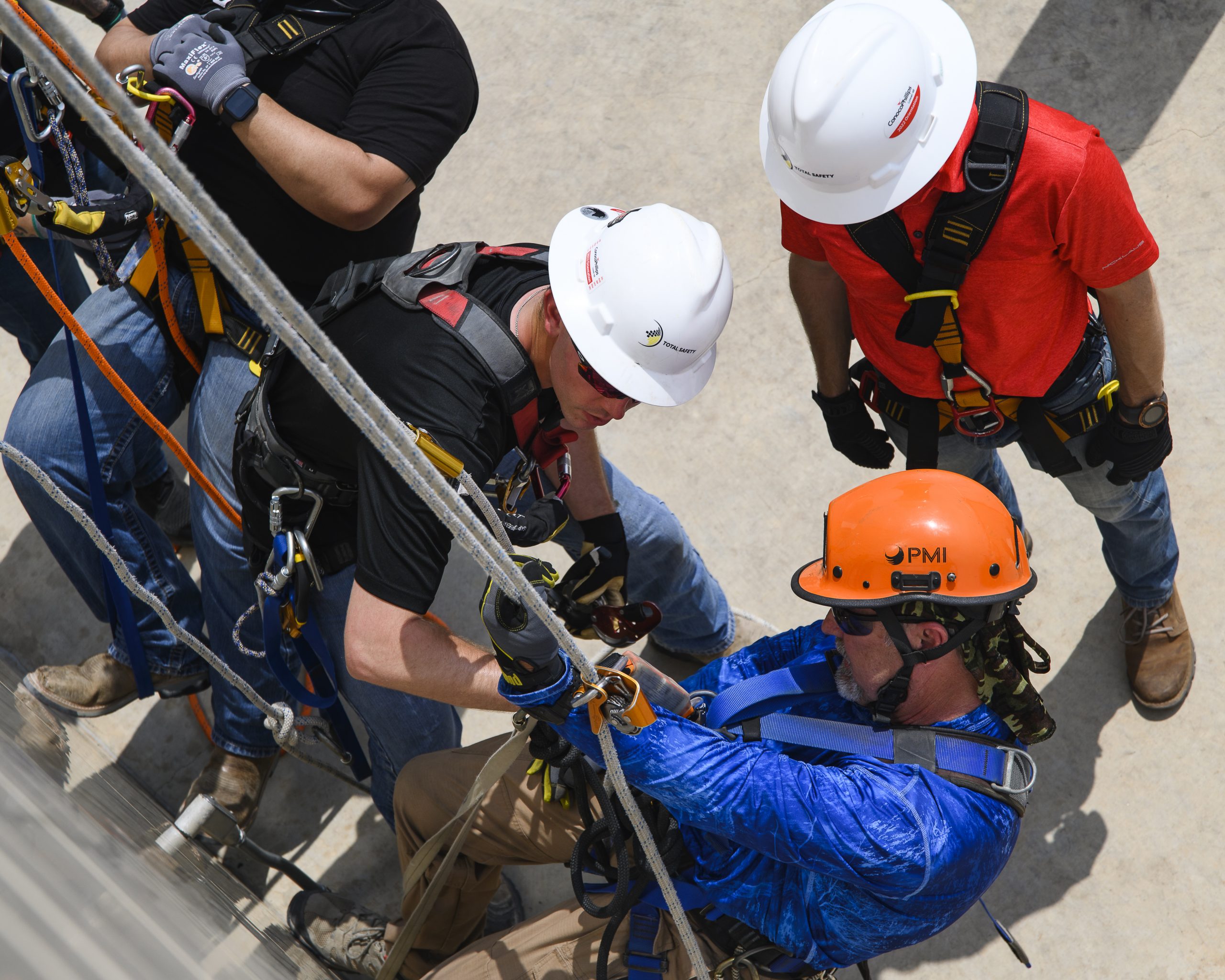
Dean McCann teaches people how to perform rescues in confined spaces, rope rescues and vertical rescue to name a few.
In his five years at Odessa College, McCann has worked with dozens of companies. He taught his first rope rescue course in December 2018. He started as a safety training instructor, but in January 2019 was primarily the industrial rope rescue instructor.
People come from all over to take the classes and the program is well respected. McCann, the Safety Training Lead Instructor in Continuing Education, said he hasn’t been able to find a similar building in West Texas or Eastern New Mexico that features the equipment and set up used at OC.
“Trust and cooperation is absolutely critical and that’s what I have with these operating companies, to the companies themselves, to the climbers, to whoever. It doesn’t matter … By the time every student leaves, they get my cell phone number,” McCann said.
He had a student who called him to train his rescue people because he was starting his own rescue company. McCann said the man had gone to his classes in the past and had a major operating company call him and tell him to go to McCann’s class.

McCann, a retired Odessa Police officer, teaches the skills that national organizations require. For the scaffold building class, you have to take a 100-question test to pass and get your certificate and you have to get all the answers right.
If they miss 14 or 15 questions, McCann marks those and has them go back and research OSHA regulations. Sometimes, it takes two or three tries.
“But they have to make (it) and that’s not from me. That’s from the Scaffold Training Institute. When I went to the instructor class on that, I had to take a 100-question test and pass it,” McCann said.
For the rope rescue class, there is no written test.
“It’s all practical. If you can’t do a particular skill in an afternoon, you have until noon the next day to perform the skill. If you can’t do it, I cut you from the class and you’re done. It’s three-pronged, if you will. I’ve got an obligation to the student that’s in the class. One is to be honest with them and I’ve told them … I don’t think you’re going to get through this class. Every day gets harder than the previous day, physically. The second obligation is to their company. I want to make sure that company is sending the right person. … The third obligation I have is to the operating companies that are going to be calling that company for that person to come out and work. That way each of those people, those three tiers if you will, by the time they get out and you see my name on a card, you’ve earned your stripes,” McCann said.
For Rescue Training International, you have to be 18 or older. You can’t weigh less than 130 pounds or more than 310, which is an American Standards National Institute rule. If you weigh drastically less than 130 pounds, a harness will not fit you properly.

“But as I said when the ROTC teams come in from Odessa High and Permian, I’m not sure if they’re 18 or over. All that is handled internally with the school district, but they’re not getting certified. It is basically just a fun play day, if you will. There’s no certification,” McCann said.
Recently, OC celebrated its entry into the OC Alliance Program.
Through the Alliance Program, created in 2002, OSHA establishes formal relationships with groups committed to worker safety and health and collaborates with them to prevent workplace fatalities, injuries and illnesses. These groups include trade and professional associations, labor unions, educational institutions, community and faith-based groups and government agencies, a news release said.
OSHA and Alliance participants collaborate to provide workplace safety and health awareness of workers’ rights and employers’ responsibilities under the Occupational Safety and Health Act.

There also are grants available.
“OSHA won’t necessarily give you a grant. What they do is put you in touch with people that can, or go through their resources to do it, primarily their Susan Harwood grants, which is a very good grant system. You have to apply for the grant just like any other. (It’s) our intent to do that and so in getting with the different departments here at the college, truck driving academy, our fab lab, welding department, see what kind of things are needed, and then begin a grant process to help those departments as well the Occupational Safety Division,” McCann said.
He added that there are a certain number of those events they have to attend each year as part of the Alliance hosting OSHA events at OC. This gets people on the OC campus where they can see what the college has and coordinate training classes if they need them.
“It’s just a big … asset sharing … to build on to the good systems. Our systems are spot on and what we’re looking to do is simply put more sprinkles on the icing on the cake,” McCann said.



